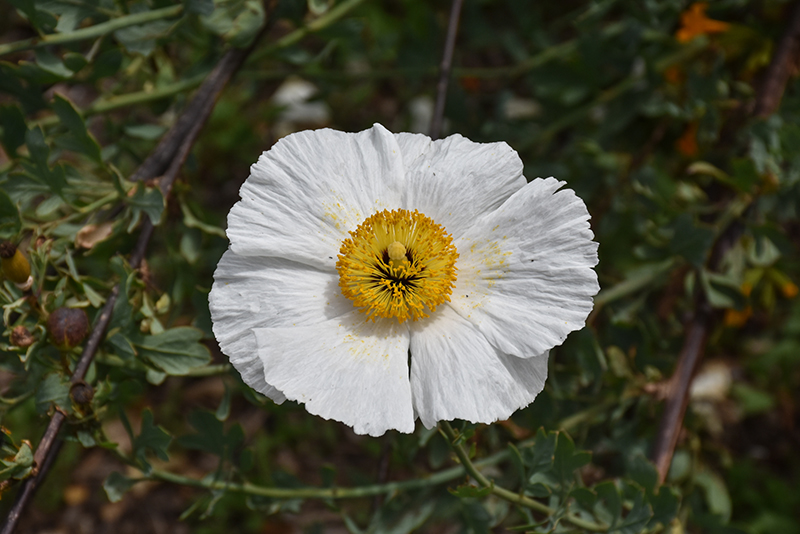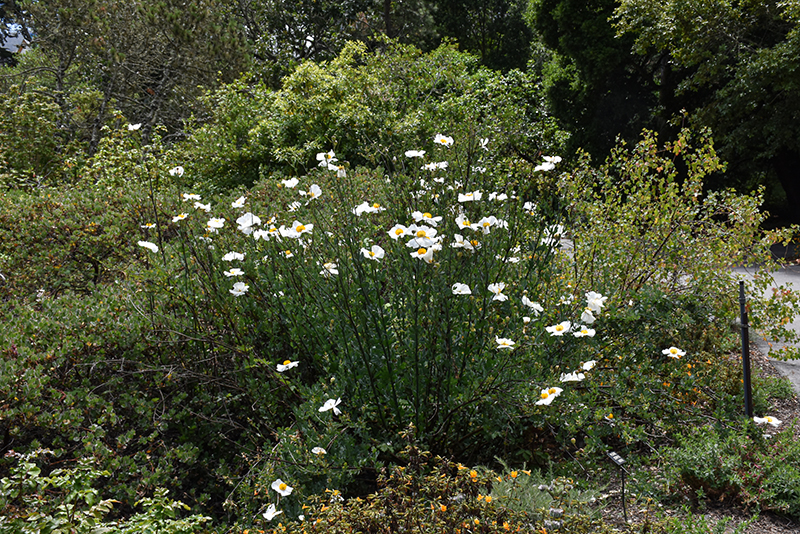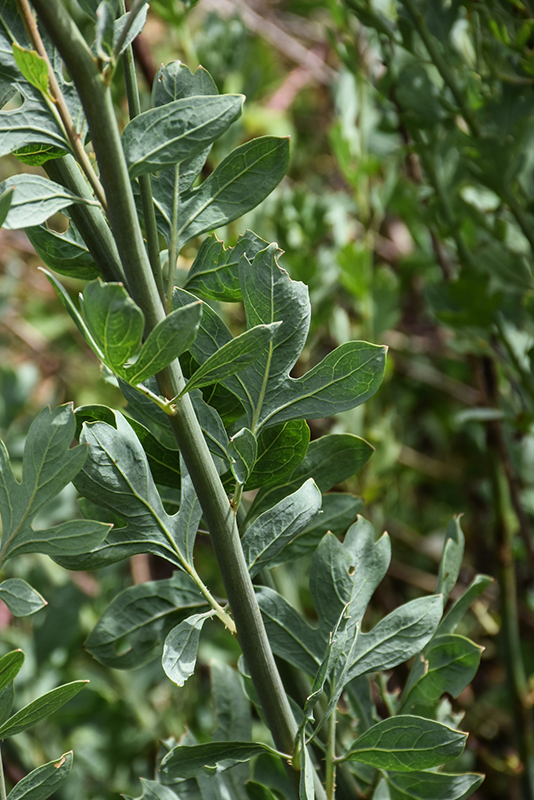Plant Finder
Plant Height: 3 feet
Flower Height: 5 feet
Spread: 8 feet
Sunlight:
![]()
![]()
Hardiness Zone: 7b
Other Names: California Tree Poppy
Description:
A Californian native perennial featuring volumes of large, showy white blooms with golden centers over glaucous gray foliage; peak flowering during spring and summer; spreads by underground runners, establish a root barrier if containment is desired
Ornamental Features
Coulter's Matilija Poppy has masses of beautiful fragrant white cup-shaped flowers with gold centers at the ends of the stems from early spring to mid summer, which are most effective when planted in groupings. The flowers are excellent for cutting. Its attractive tomentose lobed pinnately compound leaves emerge light green in spring, turning powder blue in color with showy grayish green variegation throughout the season.
Landscape Attributes
Coulter's Matilija Poppy is a spreading perennial with an upright spreading habit of growth. Its medium texture blends into the garden, but can always be balanced by a couple of finer or coarser plants for an effective composition.
This plant will require occasional maintenance and upkeep, and should be cut back in late fall in preparation for winter. It is a good choice for attracting birds, bees and butterflies to your yard, but is not particularly attractive to deer who tend to leave it alone in favor of tastier treats. Gardeners should be aware of the following characteristic(s) that may warrant special consideration;
- Spreading
Coulter's Matilija Poppy is recommended for the following landscape applications;
- Mass Planting
- General Garden Use
- Groundcover
- Naturalizing And Woodland Gardens
- Container Planting
Planting & Growing
Coulter's Matilija Poppy will grow to be about 3 feet tall at maturity extending to 5 feet tall with the flowers, with a spread of 8 feet. It grows at a fast rate, and under ideal conditions can be expected to live for approximately 20 years. As an herbaceous perennial, this plant will usually die back to the crown each winter, and will regrow from the base each spring. Be careful not to disturb the crown in late winter when it may not be readily seen!
This plant does best in full sun to partial shade. It prefers dry to average moisture levels with very well-drained soil, and will often die in standing water. It is considered to be drought-tolerant, and thus makes an ideal choice for a low-water garden or xeriscape application. It is not particular as to soil pH, but grows best in sandy soils, and is able to handle environmental salt. It is somewhat tolerant of urban pollution. This species is native to parts of North America. It can be propagated by division.
Coulter's Matilija Poppy is a fine choice for the garden, but it is also a good selection for planting in outdoor pots and containers. With its upright habit of growth, it is best suited for use as a 'thriller' in the 'spiller-thriller-filler' container combination; plant it near the center of the pot, surrounded by smaller plants and those that spill over the edges. It is even sizeable enough that it can be grown alone in a suitable container. Note that when growing plants in outdoor containers and baskets, they may require more frequent waterings than they would in the yard or garden.






